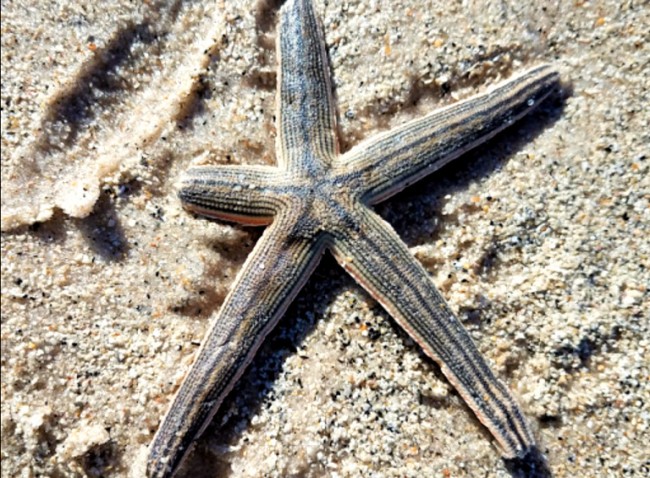Staff Pick: This is one of the news stories our staff is reading this week.

Welcome to our new blog series: The Story Behind Your Beach Find.
In this series of blogs will be taking a closer look at some of the treasures you may find while beachcombing on your Outer Banks vacation.
The North Carolina coast is a beachcomber's dream, as there are so many capes and inlets that are great for collecting shells and other marine debris.
In recent weeks, there have been a few bouts of intense surf and winter storms, which have deposited beach treasures en masse. There has been everything from driftwood to sunglasses, to whelk to starfish — oh, the starfish. These not-so-common finds have been washing up in droves, which has folks asking, “Why so many starfish?”
We will answer that question a little later on. We want to start by formally introducing the *star* of this blog.
Sea Stars or Starfish are the epitome of “beach vibes”. They are found all throughout tropical designs, prints, interiors, and decorations. But did you know starfish aren’t actually fish at all? While calling them starfish is totally acceptable, the biological term for these creatures is “sea star”
Sea stars are related to sand dollars, sea urchins, and all other fellow echinoderms. The term “echinoderm” is just a fancy way of classifying marine animals whose bodies have radial symmetry.
While there are a variety of different sea stars, if you find one in our area, it will most likely be one of the following:
Common Sea Star
Gray Sea Star
Beaded Sea Star
Each “point” of the star is an arm with an eye-spot on the very tip. Having their eye on the end of an arm is important for them to live, as these animals are bottom dwellers, meaning they live and feed on the sandy bottom of the ocean. They will bury themselves in the sand and stick their eyes out of the sand, watching for movement or changing in lightness/darkness. Their vision is very rudimentary, and not as detailed or complex as the human eye, but that’s okay, because these organisms live in areas where visibility is low anyway. What they are equipped with is more than enough for them.
Walking along our beaches, you will encounter many opened shells. Some of these shells may be the result of a lost “wrestling match” with a sea star. These animals love to feast on mollusks and their bodies are made to be expert “shuckers”. Sea stars are able to use their 5 arms to latch on to the shell and break it open, allowing them to reach the goods on the inside.
It’s great that starfish prefer shelled critters, because honestly, they don’t move very fast — topping out at about 30 inches per minute. Their slow-poke status make them prone to predation, but fortunately, they have a great defense mechanism. When a predator grasps upon an arm, the sea star can just say “see ya later” to its arm, as they drop their arm and grow a new one. How cool is that?












